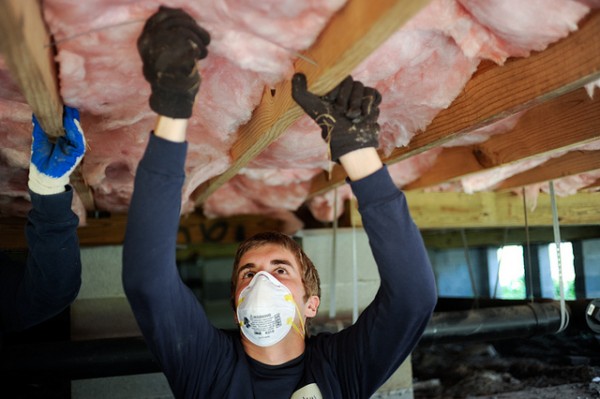With winter is just two weeks away, researchers in Toronto, Canada, will soon begin testing how a simple design change in home construction can significantly reduce heating bills during the coldest months. Called the Gemini Nested Thermal Envelope Design, the strategy merges three key green building concepts: efficient insulation, the use of a heat pump and a reduction of unused living space.
The project is the brainchild of Russell Richman, a professor in the Department of Engineering and Architectural Science at Toronto’s Ryerson University, and Kim Pressnail, a professor in the Civil Engineering Department at the University of Toronto (U of T). Richman and Pressnail theorized that if a home is divided into a core interior zone and a lightly used perimeter zone, only a small heat pump would be needed to maintain a comfortable temperature in the main living areas at a cost savings of about 80 percent, compared to using a conventional furnace.

According to Richman and his team, about 60 percent of energy usage in a typical house is used on space heating, most of which is channeled inefficiently to rooms that don’t need heating or slowly escapes through small gaps in the outer insulation envelope. The Ryerson/U of T group is trying to solve this problem with the zonal system, consisting of a heavy layer of insulation around the core interior—usually containing high-traffic areas such as the kitchen, living room, bathrooms and bedrooms—and another thinner layer of insulation around the outer rooms of the home. These areas would include formal dining rooms, sunrooms, enclosed porches and guest rooms that are not occupied every day.
The heat pump in this arrangement would not only send heat into the interior core, it would also be programmed to capture heat seeping to the exterior rooms and recycle it back into the core before it has a chance to escape through the outside walls. The interior rooms would be maintained a comfortable 21 degrees C (roughly 70 degrees F) while the outer unoccupied rooms would be kept at 5 degrees C (about 40 degrees F). In warmer months, the process could be reversed, with the heat pump allowing the exterior zone to heat up while it maintains a comfortably cool temperature in the core.

“In the winter, you could get savings by living in a smaller space, period,” Richman was quoted as saying to Phys.org. “But you can’t just heat one room, because there is no insulation between one room and the outside or other rooms. To do it really well, you need to insulate the room and then insulate the whole house. As we explain it, zonal heating is just a house within a house, or a box within a box.”
With grants from the Ontario Power Authority’s Technology and Development Fund and the University of Toronto, totaling about C$300,000, the Gemini design will soon be retrofitted into an 1870s-era Victorian-style masonry home in downtown Toronto. The team will choose volunteer subjects to live in the house over a five-year period and monitor their behavior to see if the zonal theory works in the real world.